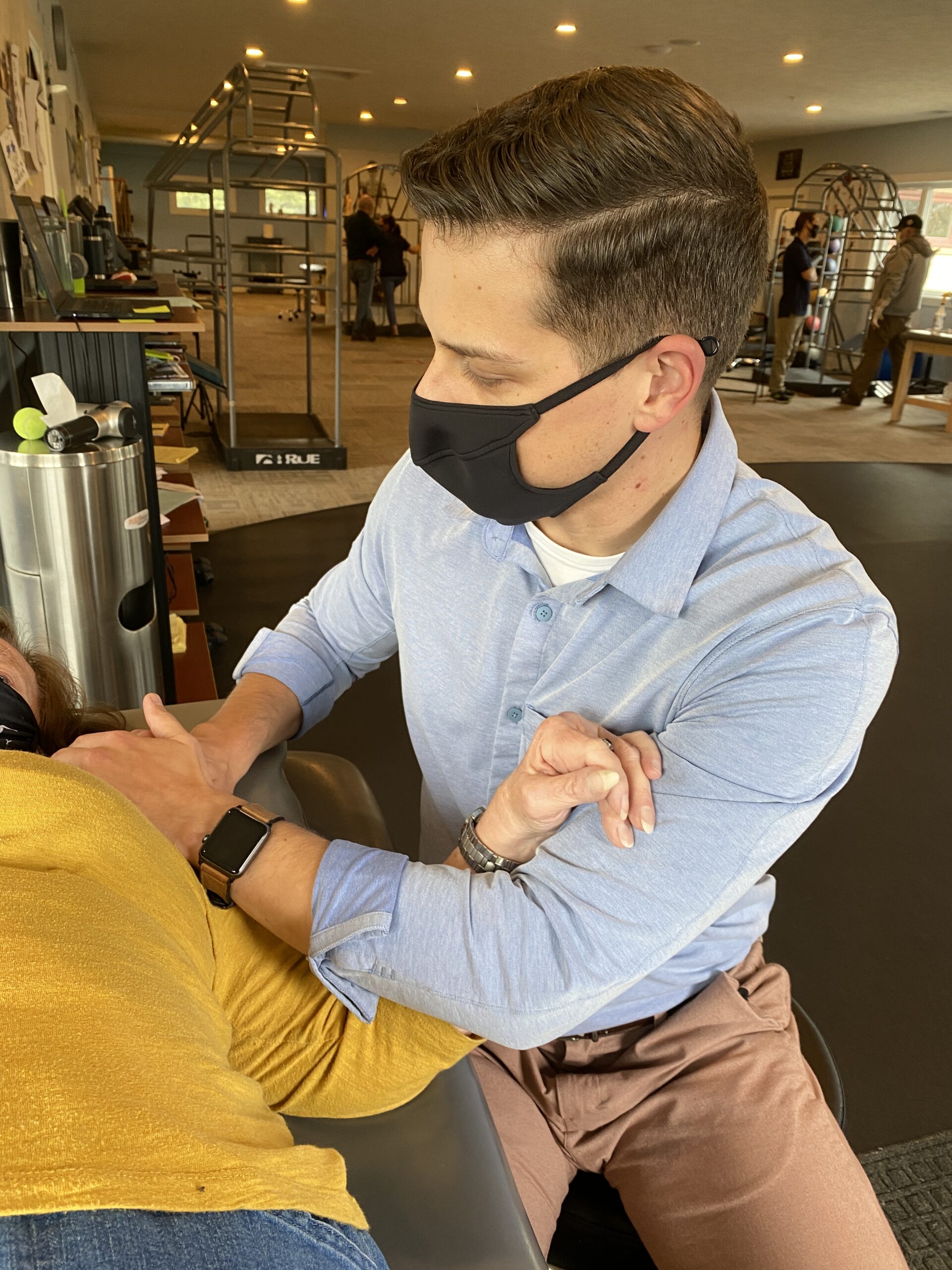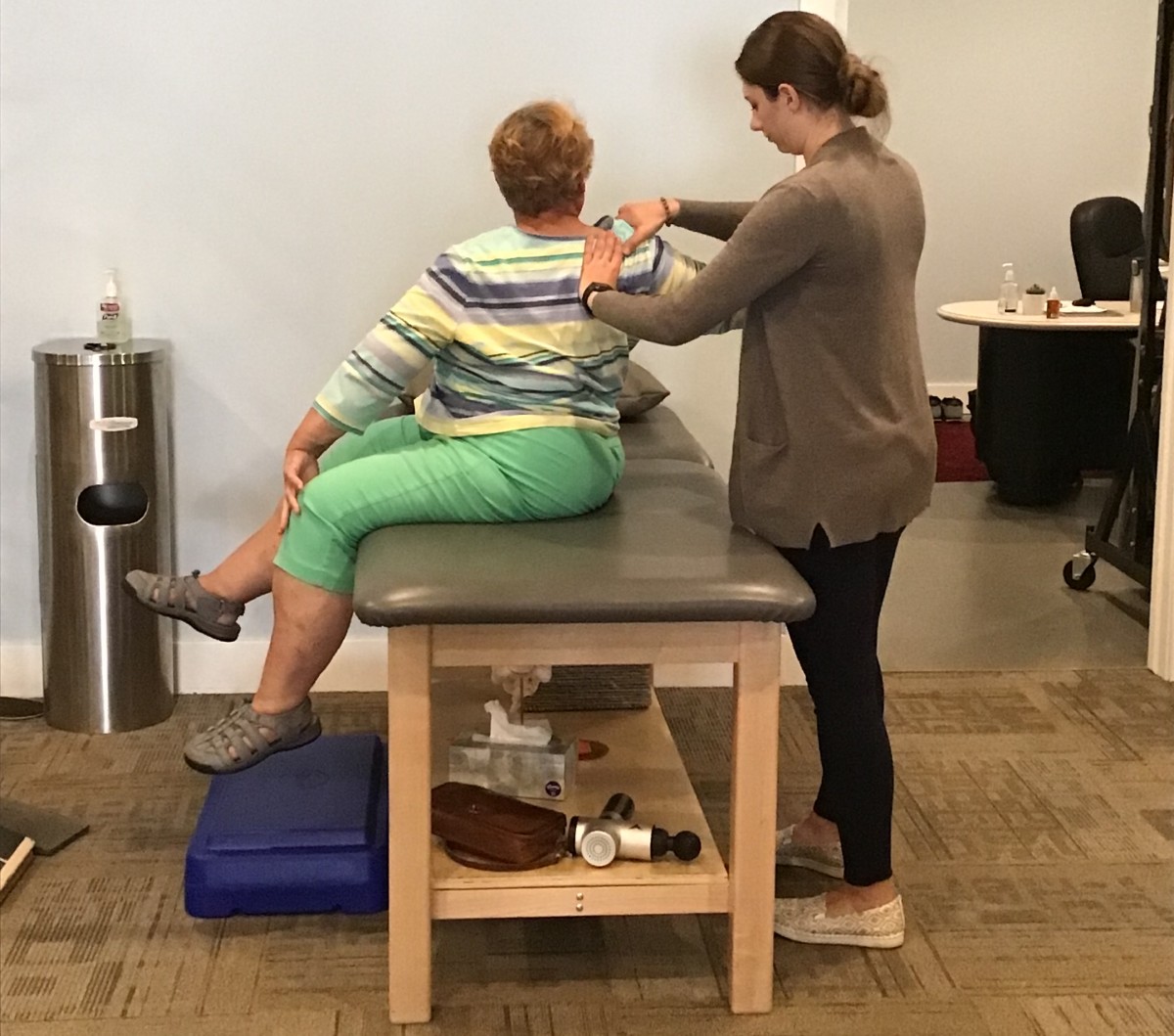- Traverse City, MI |
-
West: W Front St:
(231) 944-6541
-
| Central: Munson Ave :
(231) 421-9300


Hands-on manual therapy involves hands-on therapeutic techniques to diagnose and treat various injuries, disabilities, or musculoskeletal pain.
It is often a key component of functional training or sports or orthopedic rehabilitation.
In The Superior Method, a therapist trained in functional manual reaction will use gentle and precise movements to activate joints, facilitate proper motion, and enhance areas of restriction.
Hands-on manual therapy is often done in conjunction with other rehab techniques like exercise, balance training, or pain-relieving modalities to alleviate tension, stiffness, or motion limitations.
Hands-on physical therapy involves direct contact between therapist and patient. It may be used to manage various conditions, including:
Neck pain
Low back pain
Shoulder pain
Ankle and foot problems
Hand and wrist issues
Muscle spasms
Hip problems
Knee injuries

Manual therapy covers a variety of hands-on techniques that are founded on years of research, clinical reasoning, and evidence-based practice.
Depending on your injury or condition, your hands-on therapy plan may include one or more of the following treatments:
Myofascial release - Myofascial release therapy seeks to mobilize connective fascia tissues. It is also performed to reduce scarring and improve the flexibility of the underlying tissues. The method involves applying sustained pressure on the tissue to relax contracted muscles and boost blood and oxygen circulation.
Massage – Massage therapy offers more benefits than just reducing stress and improving relaxation. It can also help decrease inflammation and muscle tension, boost circulation, and encourage better sleep.
Trigger point therapy – A trigger point is a painful knot in the muscle that forms when muscles do not relax and causes pain when compressed. The goal of trigger point therapy is to release muscle constriction. It is often performed alongside other hands-on treatments, including massage.
Soft tissue techniques – Soft tissue therapy involves applying direct pressure on tissues to relax muscles and help release tight or tense fascia tissue. These techniques are done to help boost range of motion, reduce swelling, alleviate pain, and mobilize joints.
Passive and Active-Assistive Range of Motion – Range of motion in the joints may be impaired because of muscle pain and stiffness, scar tissue, muscle imbalance, and/or altered biomechanics. To alleviate symptoms and increase range of motion, your therapist may glide the affected joint passively (they perform the movement for you) or actively (they perform the movement with you).
Physical therapists primarily use manual therapy to:
Reduce muscle and joint pain
Eliminate inflammation
Increase range of motion
Facilitate tissue repair
Improve function and stability
Encourage muscle relaxation
Boost blood flow and oxygen circulation
Increase tissue extensibility
Increase active range of motion.
Improve joint mobility
Minimize soft tissue swelling
Read more on the benefits of Hands-on Physical Therapy by Clicking Here.
We've got in-person, educational Pain Relief Workshops on a monthly basis that cover a variety of physical problems and how to heal. Find out more or register by Clicking Here.
Hands-on manual therapy is not a one-size-fits-all treatment. At Superior Physical Therapy, we provide patients with effective hands-on techniques and personalized care based on their age, condition, lifestyle, and activities. Our goal is to help you achieve lasting relief by determining and treating the root cause of your pain.
Dial 231.944.6541 or send an email to info@thesuperiortherapy.com to book a free consultation.
